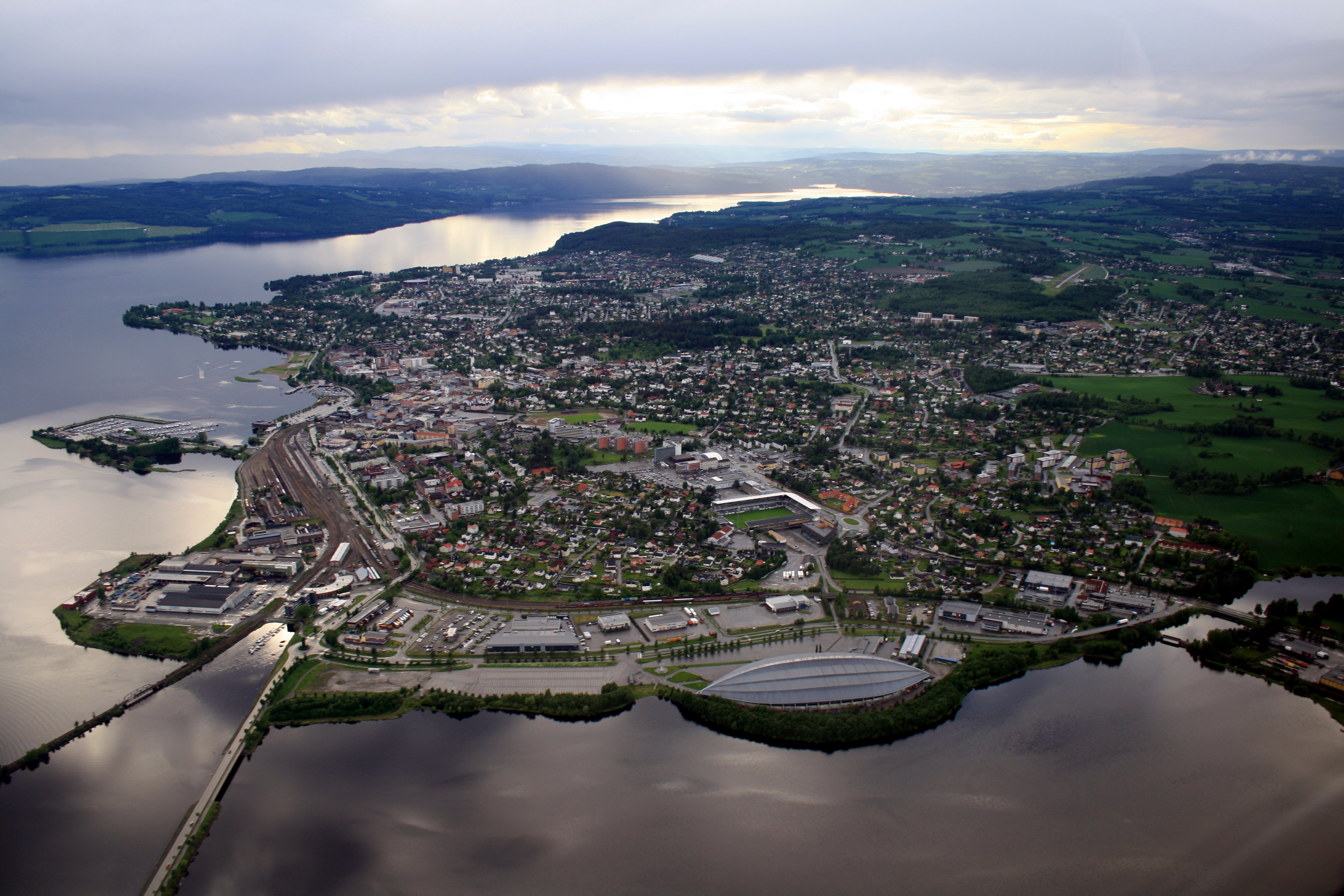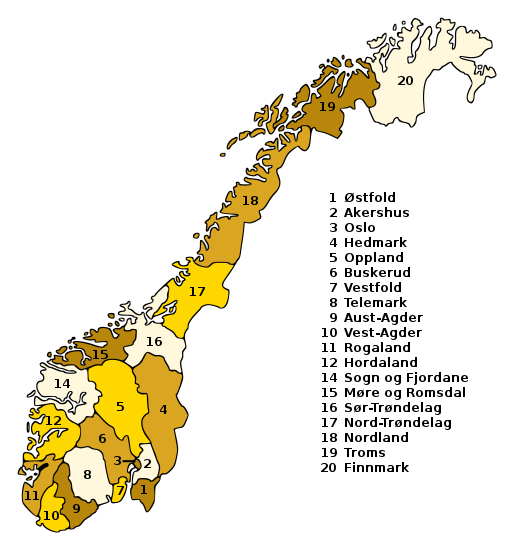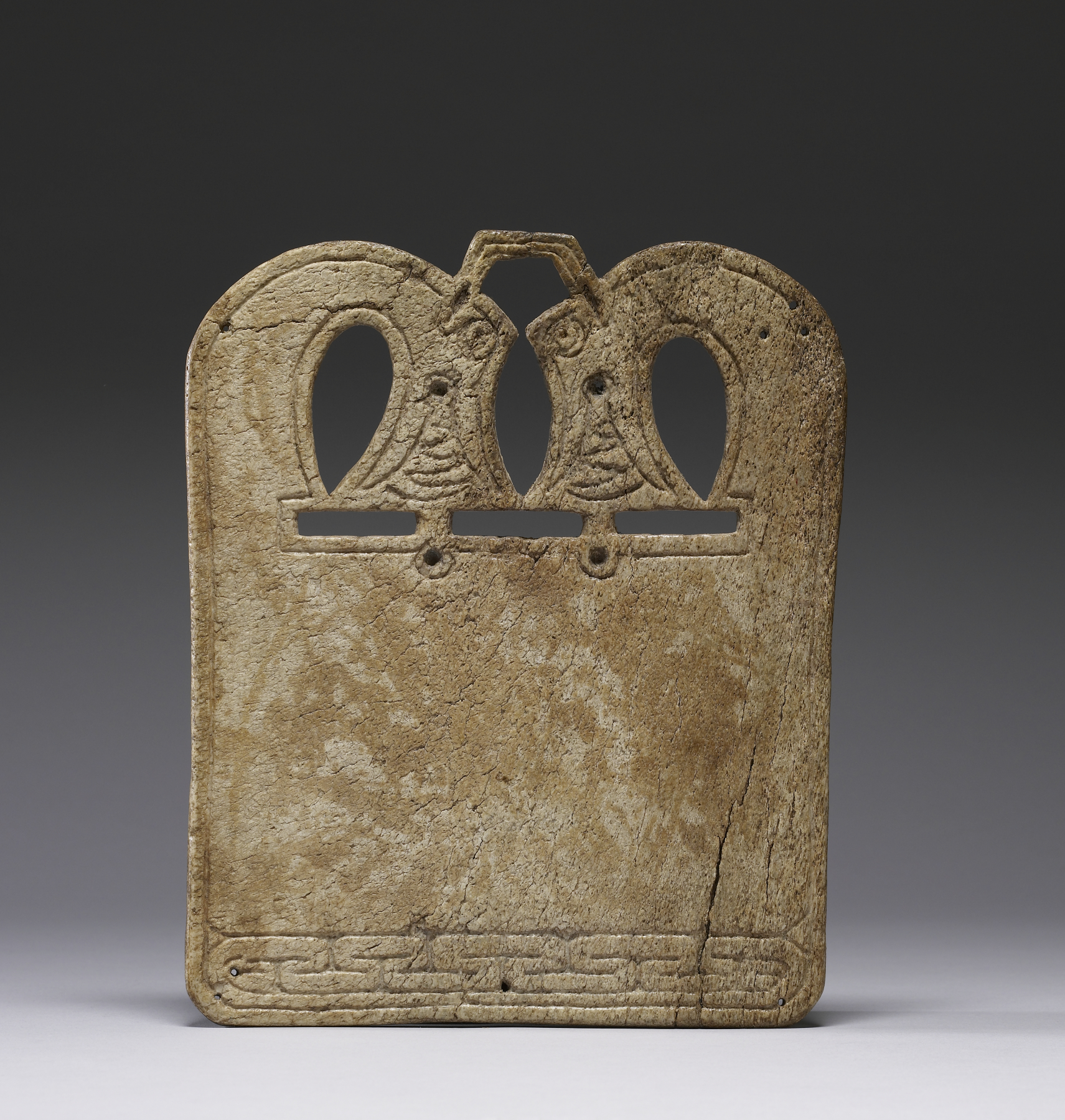|
Bjølstad Farm
The Bjølstad Farm () is a farm in Heidal in the municipality of Sel in Innlandet county, Norway. The farm was mentioned in written sources as early as 1270. Eirik Bjørnsson, who gradually purchased the farm in the 1430s, was the ancestor of the Bratt family, who had lived at the farm for many generations. By 1680, it had developed into a scattered farming settlement with more than 26 leased-out properties and 700 buildings. One of its larger properties is the farm named Søre Lykkja ('South Lykkja'), also known as Bjølstadløkken, to the northwest. The Veslesetra property also belongs to the farm. In 1904 the farm had of cultivated land and of forest. The farm is privately owned. The Bjølstad Chapel, now relocated at Heidal Church, is a timber-framed structure dating from 1531 that can accommodate 75 people. Its doorposts are believed to date from an earlier stave church and are decorated with Urnes Style Viking art, also known commonly as Norse art, is a term widely ... [...More Info...] [...Related Items...] OR: [Wikipedia] [Google] [Baidu] |
Bjølstad Gård HHB-07927
Bjølstad (also called Bjølstadmo) or Heidal is a village in Sel Municipality in Innlandet county, Norway. The village is located in the Heidal valley, about northeast of the village of Skogbygda and about southwest of the town of Otta. The village has a population (2022) of 376 and a population density of . The village is the site of the historic Bjølstad Farm and the Heidal Church. Historically, this small village was the administrative centre An administrative centre is a seat of regional administration or local government, or a county town, or the place where the central administration of a commune, is located. In countries with French as the administrative language, such as Belgi ... of the former municipality of Heidal which existed from 1908 until 1965. References Sel, Norway Villages in Innlandet {{Innlandet-geo-stub ... [...More Info...] [...Related Items...] OR: [Wikipedia] [Google] [Baidu] |
Heidal
Heidal or Heidalen is a valley in Sel Municipality in Innlandet county, Norway. The U-shaped valley follows the river Sjoa which begins in the nearby Jotunheimen mountains eastward until it joins the Gudbrandsdalslågen river in the main valley which runs through the region, Gudbrandsdalen. The western end of the Sjoa river valley is in Vågå Municipality and there, it is called the Sjodalen valley. From 1908-1965, the Heidal valley was an independent municipality called Heidal, and since 1965, it has been a part of Sel Municipality. The main urban area in the valley is the village of Bjølstad. The valley runs northwest from the village of Sjoa for about to the village of Bjølstad where the valley curves to the southwest/south for about before entering Vågå municipality. After entering Vågå, the valley becomes much narrower as it enters into the Jotunheimen mountains and heading to the source of the river, the large lake Gjende. History In the year 1177, Iva ... [...More Info...] [...Related Items...] OR: [Wikipedia] [Google] [Baidu] |
Sel, Norway
Sel is a List of municipalities of Norway, municipality in Innlandet county, Norway. It is located in the Traditional districts of Norway, traditional district of Gudbrandsdal. The administrative centre of the municipality is the List of cities in Norway, town of Otta, Norway, Otta. The municipality also includes several notable villages including Bjølstad, Dale, Sel, Dale, Høvringen, Nord-Sel, Sandbumoen, Sjoa (village), Sjoa, and Skogbygda, Sel, Skogbygda. The municipality is the 130th largest by area out of the 356 municipalities in Norway. Sel is the 170th most populous municipality in Norway with a population of 5,567. The municipality's population density is and its population has decreased by 6.5% over the previous 10-year period. General information The new municipality of Sel was established on 1 January 1908 when Vågå Municipality was divided into three. The northeastern part became the new Sel Municipality (population: 2,287), the southeastern part became the n ... [...More Info...] [...Related Items...] OR: [Wikipedia] [Google] [Baidu] |
Innlandet
Innlandet is a Counties of Norway, county in Norway. It was created on 1 January 2020 with the merger of the old counties of Oppland and Hedmark (Jevnaker Municipality and Lunner Municipality were transferred to the neighboring county of Viken (Norwegian county), Viken on the same date). The new county has an area of , making it the largest county in Norway after the division of the old Troms og Finnmark county in 2024. The region was known as Opplandene or Opplanda since the middle ages. Historically part of Akershus, Oplandene County existed from 1757 to 1781, when it was divided into Christians County and Hedemarken County, also known as Western and Eastern Oplandene. In 1919 the two counties were renamed Oppland and Hedmark, and in 2020 they were again merged under the name Innlandet (with the exception of Jevnaker Municipality and Lunner Municipality, which went to the new county of Viken (county), Viken). This present name is a newly constructed name with no historical basi ... [...More Info...] [...Related Items...] OR: [Wikipedia] [Google] [Baidu] |
Counties Of Norway
There are 15 counties in Norway. The 15 county, counties are administrative division, administrative regions that are the first-level administrative divisions of Norway. The counties are further subdivided into 357 municipalities of Norway, municipalities (). The island territories of Svalbard and Jan Mayen are outside the county divisions and they are ruled directly from the national level. The capital city of Oslo is both a county and a municipality. In 2017, the Solberg's Cabinet, Solberg government decided to abolish some of the counties and to merge them with other counties to form larger ones, reducing the number of counties from 19 to 11, which was implemented on 1 January 2020. This sparked popular opposition, with some calling for the reform to be reversed. The Storting voted to partly undo the reform on 14 June 2022, with Norway to have 15 counties from 1 January 2024. Three of the newly merged counties, namely Vestfold og Telemark, Viken (county), VikenLars R ... [...More Info...] [...Related Items...] OR: [Wikipedia] [Google] [Baidu] |
Norway
Norway, officially the Kingdom of Norway, is a Nordic countries, Nordic country located on the Scandinavian Peninsula in Northern Europe. The remote Arctic island of Jan Mayen and the archipelago of Svalbard also form part of the Kingdom of Norway. Bouvet Island, located in the Subantarctic, is a Dependencies of Norway, dependency, and not a part of the Kingdom; Norway also Territorial claims in Antarctica, claims the Antarctic territories of Peter I Island and Queen Maud Land. Norway has a population of 5.6 million. Its capital and largest city is Oslo. The country has a total area of . The country shares a long eastern border with Sweden, and is bordered by Finland and Russia to the northeast. Norway has an extensive coastline facing the Skagerrak strait, the North Atlantic Ocean, and the Barents Sea. The unified kingdom of Norway was established in 872 as a merger of Petty kingdoms of Norway, petty kingdoms and has existed continuously for years. From 1537 to 1814, Norway ... [...More Info...] [...Related Items...] OR: [Wikipedia] [Google] [Baidu] |
Heidal Church
Heidal Church () is a parish church of the Church of Norway in Sel Municipality in Innlandet county, Norway. It is located in the village of Bjølstad, in Heidal, a side valley of the main Gudbrandsdalen valley. It is the church for the Heidal parish which is part of the Nord-Gudbrandsdal prosti (deanery) in the Diocese of Hamar. The brown, wooden church was built in a cruciform design in 1941 using plans drawn up by the architect Bredo Berntsen. The church seats about 292 people. The church, cemetery, and Bjølstad Chapel are encircled by a sturdy double-layered timber-framed wall that is approximately tall. The wall has a slate roof on top. History The history of this church is rather complicated with several church sites and various buildings that have served the congregation over the centuries. The first church in Heidal was a wooden stave church that is said to have been built during the first half of the 11th century. The church was originally located at ''Nørdre Prest ... [...More Info...] [...Related Items...] OR: [Wikipedia] [Google] [Baidu] |
Stave Church
A stave church is a medieval wooden Christian church building once common in north-western Europe. The name derives from the building's structure of post and lintel construction, a type of timber framing where the load-bearing ore-pine posts are called ''stafr'' in Old Norse (''stav'' in modern Norwegian). Two related church building types also named for their structural elements, the post church and palisade church, are often called 'stave churches'. Originally much more widespread, most of the surviving stave churches are in Norway. The only remaining medieval stave churches outside Norway are: Hedared stave church () in Sweden and the Vang Stave Church which was built in Norway and relocated in 1842 to contemporary Karpacz in the Karkonosze mountains of Poland. One other church, the Anglo-Saxon Greensted Church in England, exhibits many similarities with a stave church but is generally considered a palisade church. Construction Archaeological excavations have ... [...More Info...] [...Related Items...] OR: [Wikipedia] [Google] [Baidu] |
Viking Art
Viking art, also known commonly as Norse art, is a term widely accepted for the art of Scandinavian Norsemen and Vikings, Viking settlements further afield—particularly in the British Isles and Iceland—during the Viking Age of the 8th-11th centuries. Viking art has many design elements in common with Celtic Art, Celtic, Migration Period art, Germanic, the later Romanesque art, Romanesque and Eastern European art, sharing many influences with each of these traditions. Generally speaking, the current knowledge of Viking art relies heavily upon more durable objects of metal and stone; wood, bone, ivory and textiles are more rarely preserved. The artistic record, therefore, as it has survived to the present day, remains significantly incomplete. Ongoing archaeology, archaeological excavation (archaeology), excavation and opportunistic finds, of course, may improve this situation in the future, as indeed they have in the recent past. Viking art is usually divided into a sequence ... [...More Info...] [...Related Items...] OR: [Wikipedia] [Google] [Baidu] |
Cultural Heritage Act (Norway)
The Cultural Heritage Act ( or ''kulturminneloven'') of 1978 is a Norway, Norwegian law that protects national heritage site, heritage sites and cultural environments. The structures and spaces that it covers are deemed to have cultural or architectural value. The act includes heritage such as structures and sites, sometimes the area around a monument, protected structures, boats, shipwrecks,Kvalø, Frode, & Lyder Marstrander. 2006. Norway. In: Sarah Dromgoole (ed.), ''The Protection of the Underwater Cultural Heritage: National Perspectives in Light of the UNESCO Convention 2001'', pp. 217–228. Leiden: Martinus Nijhoff, p. 221. and cultural environments. The act describes what automatically enjoys cultural heritage protection and what may be protected under an individual decision. Content In line with Section 1 of the Cultural Heritage Act, the purpose of the law is to protect "cultural heritage and cultural environments in their uniqueness and variety ... both as part of our cu ... [...More Info...] [...Related Items...] OR: [Wikipedia] [Google] [Baidu] |
The Forests Sing Forever
''The Forests Sing Forever'' (German: ''Und ewig singen die Wälder'') is a 1959 Austrian Drama (film and television), drama film directed by Paul May and starring Gert Fröbe, Hansjörg Felmy and Joachim Hansen (actor), Joachim Hansen. It was followed by a 1960 sequel ''The Inheritance of Bjorndal''. The film's sets were designed by the art director Leo Metzenbauer, and it was filmed at the Bjølstad Farm. Cast *Gert Fröbe as Dag sen. *Hansjörg Felmy as Tore *Joachim Hansen (actor), Joachim Hansen as young Dag *Carl Lange (actor), Carl Lange as Mr. von Gall *Anna Smolik as Elisabeth von Gall *Hans Nielsen (actor), Hans Nielsen as Major Barre *Maj-Britt Nilsson as Adelheid *Elisabeth Epp as Jungfer Kruse *Jürgen Goslar as Lt. Margas *Hanns Ernst Jäger as Der Hoveländer *Hilde Schreiber as Seine Tochter Borghild *Fritz Hinz-Fabricius as Pfarrer Ramer *Franz Schafheitlin as Kaufmann Holder - Schwager des alten Dag *Peter Schmidberger as Jörn Vielfalt of Björndal References ... [...More Info...] [...Related Items...] OR: [Wikipedia] [Google] [Baidu] |
Trygve Gulbranssen
Trygve Emanuel Gulbranssen (baptized ''Trygve Emanuel Gulbrandsen''; 15 June 1894 – 10 October 1962) was a Norwegian novelist, businessman and journalist. Gulbranssen is best known for writing the Bjørndal Trilogy – ''Og bakom synger skogene'' (1933), published in English as '' Beyond Sing the Woods''; and ''Det blåser fra Dauingfjell'' (1934) and ''Ingen vei går utenom'' (1935), collectively translated under the English title '' The Wind from the Mountains''. His books were well received by critics and readers alike, and they have been translated into over 30 languages and sold more than 12 million copies. At one point prior to the outbreak of World War II, the popularity of the Trilogy made Gulbranssen the fourth-bestselling author worldwide, and the success of the American editions of his work secured for him the distinction of being the only Scandinavian author of fiction to be included in the prestigious List of Books Chosen for the White House – a collection of w ... [...More Info...] [...Related Items...] OR: [Wikipedia] [Google] [Baidu] |





